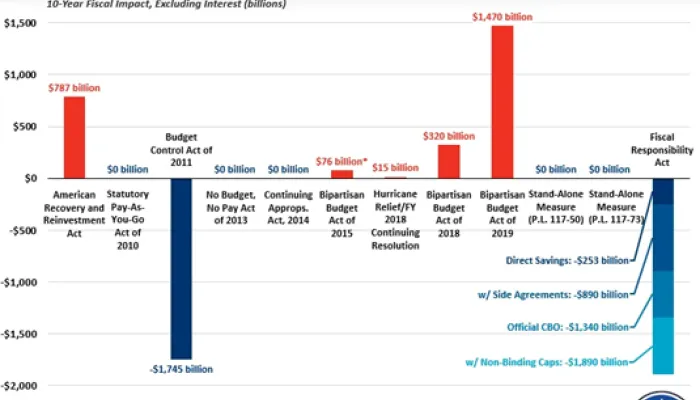Learning from Others – A World of Experience
As part of its work over the last 2 years, the Peterson-Pew Commission on Budget Reform looked at how other governments facing big fiscal challenges reinvented their budget processes. It turns out that several nations – often in far less dire fiscal straits than we now face – have successfully reformed their budget processes with good results.
Other countries have different problems, political cultures, and government institutions. Nevertheless, the changes they have introduced are not based on a set of strange foreign ideas. In fact, they reflect some basic concepts that the U.S. helped invent and that have spread from one country to another through imitation.
We can draw several lessons from other nations’ budget reforms:
Fiscal Rules. One lesson is that a budget process that operates within a clear, easily communicated, widely accepted, previously legislated constraint or fiscal rule is more likely to yield good fiscal results. Sweden, the Netherlands, and Switzerland have all enacted fiscal rules within the last 2 decades and adhered to them over economic cycles. It is no coincidence that their national budget outlooks are better than ours. The Swiss “debt brake” rule – requiring that spending match revenues on average over an economic cycle – was placed in its constitution in 2003 and has been followed since. The Germans more recently adopted a similar rule. The IMF last year surveyed international experience with fiscal rules, and endorsed the adoption of rules that are both clear and flexible enough to deal with economic cycles. Last month Federal Reserve Chair Bernanke spoke in a similar vein about what fiscal rules that might benefit the U.S. now.
Multi-year Budgets. International institutions that offer advice to developing nations on how to budget have for years now encouraged them to build budgets using a multi-year or “medium-term” framework to estimate needs and to prioritize public investments. The multi-year approach sensibly encourages policymakers to look as far forward as possible, helping to avoid nasty surprises and helping both them and private investors make long-term investments with more confidence in the stability of the government’s plan and fiscal condition. It is time, perhaps, for the U.S. to raise its eyes to the horizon and construct budgets that support long-term economic growth and can be sustained by projected revenues through the use of multi-year budgeting.
Accruing Costs. Like private businesses, many governments have used new methods to budget for and record the costs of their commitments when those costs arise – and closer to the time when they can be controlled – rather than waiting to budget for them when they are due. The U.S., which mostly budgets for its current cash needs, adopted this approach for federal loans and guarantees of private credit in 1992. Other nations have since gone farther in this direction, and we could follow their example.
Performance-informed Budgets. Some governments have not only attempted to improve their estimates of how their programs benefit the nation but have reorganized their budgets and procedures to better relate spending and tax decisions to the accomplishment of major missions and goals. Our neighbor Canada is one of the leaders in reporting on performance and using such information to redirect resources to higher priority and more cost-effective use. The U.S. has made a large investment in improving information about government’s performance but has yet to figure out how to apply it effectively to budget decisions.
Countries around the world are learning from each other how to budget with more foresight, more discipline, and better information about costs and benefits. For instance, the Austrian government’s sweeping budget reinvention combines multi-year planning, accrual methods, and a restructuring of their budget around missions and goals. Adopted unanimously by its parliament in 2006, it is being implemented in stages. The process reform recommendations of the Peterson-Pew Commission’s report, to be released November 10th, draws not only on the combined experience of its members with the U.S. budget process but on the positive lessons of other nations who in one way or another are ahead of us in reinventing the way they budget.


